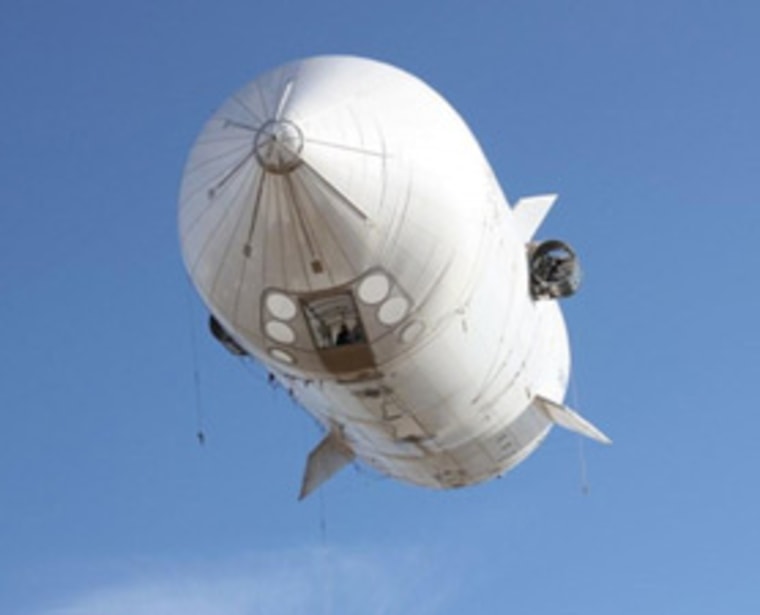After a 100-year dry spell in technological innovation, a pioneering inflatable airship is about to debut, promising a near-space experience for science experiments, as well as a sky-based platform to relay communications and to keep watch on oil spills, forest fires or even pirates at sea.
The 235-foot airship, called the Bullet 580, also could be used to transport heavy equipment to remote locations.
"We're kind of like a truck in the sky that can have different types of payloads for different requirements," Mike Lawson, chief executive of Alabama-based E-Green Technologies, told Discovery News.
E-Green acquired airship builder 21st Century Airships, which holds patents for Bullet 580 technologies and designs, including a system of bags that hold helium for lighter-than-air lift and an inner hull that is filled with ambient air.
"The bags expand as we go up in altitude," said Lawson. "If you hit a hard landing with any of our airships, it's just going to kind of bounce.
Payloads are carried inside the balloon, which is one-sixteenth of an inch thick, but 10 times stronger than steel. The material is a new type of Kevlar, which is used to make bulletproof vests. The airship's engines are mounted on the fuselage.
Airships were widely used before the 1940s, when airplanes became more capable and less expensive to fly. Several high-profile accidents, including the 1937 Hindenburg explosion that killed 37 people, left few markets for inflatable airships beyond advertising.
E-Green is betting that Bullet 580 will usher in a new age for air-based remote sensing and heavy-lift transport. The ships are designed to haul payloads as heavy as 15,000 pounds up to 2,500 feet. Or, they can fly at mid-latitudes of around 20,000 feet to serve as a communications hub-in-the-sky or a surveillance platform to monitor oil spills, forest fires, volcanic eruptions, hurricanes as well as provide border patrol and other security monitoring services.
Moving at a top speed of 80 mph, airships can linger over areas far longer than airplanes. Lawson expects Bullet 580 to be able to stay airborne for at least 48 hours, and eventually up to about a week.
The ships, which can be flown with a crew, or remotely, sell for $8 million apiece, Lawson said, adding that the company is also creating a fleet for leasing at a cost of $300,000 to $500,000 per month.
E-Green has tested and flown 14 prototypes and plans to inflate the Bullet 580 for the first time later this month. Its first mission will be to carry a NASA soil moisture sensor, expected to fly from the Kennedy Space Center over the summer. The Florida spaceport, which will be largely idle after the space shuttles are retired later this year, is looking to partner with companies that can use the shuttle runway and other facilities.
"The spaceport of the future is not your father's spaceport," said Jim Ball, development manager for Kennedy Space Center. "We are looking at broadening our portfolio of compatible uses."
